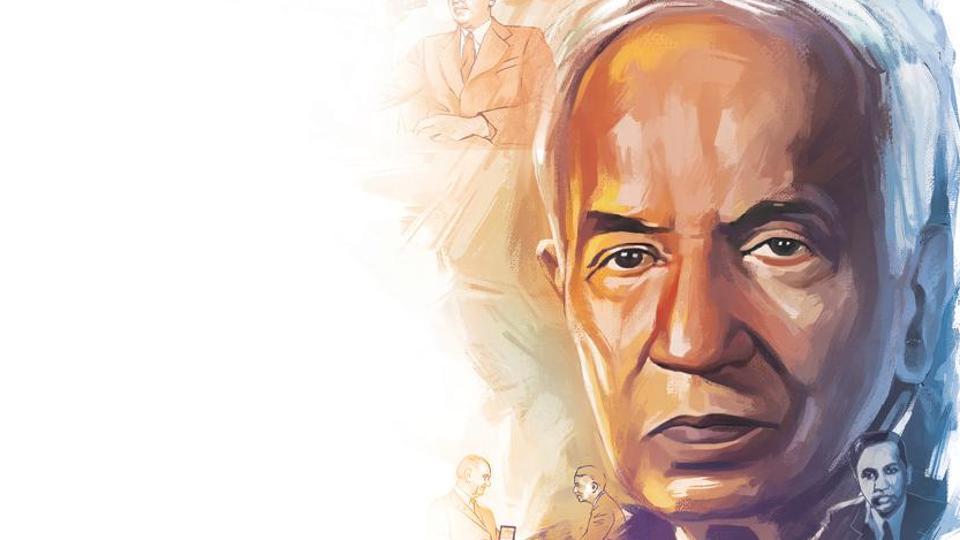This great astrophysicist strongly influenced our understanding of stellar objects, black holes, white dwarfs and conducted remarkable work on Newton’s seminal work titled Philosophiae Naturalis Principia Mathematica.

Chandra, as he was widely known, was born on October 19, 1910, in Lahore, to Tamil parents Sitalakshmi Balakrishnan and Chandrasekhara Subrahmanya Ayyar. His father was the deputy auditor general of the Northwestern Railway. The family moved to Allahabad in 1916 and settled in Madras in 1918.
Early life and education
Chandrasekhar was homeschooled till the age of 12. He then attended the Hindu High School at Triplicane, Madras and studied at Presidency College, Madras from 1925 to 1930. During this stint, he met Lalitha Doraiswamy and they got married in 1936.
A highlight of his college years was the publication of his paper, The Compton Scattering and the New Statistics. Successes such as this strengthened his determination to pursue a career in scientific research despite his father’s wish for him to join Indian Civil Service.
In 1930, Chandrasekhar was awarded a government scholarship to pursue graduation at the University of Cambridge, United Kingdom and he joined Trinity College. During this time, Chandra became enamoured with the subject of white dwarf stars. He explained how when stars run out of hydrogen, they become unstable and collapse in on themselves. But the most massive stars explode into a supernova and then collapse down into neutron stars, or black holes. He earned a PhD in 1933 and was elected to Prize Fellowship.
Career
In 1937, Chandrasekhar was appointed assistant professor in the University of Chicago – a position he continued in for his entire career spanning six decades. In 1947, he was appointed the distinguished service professor of theoretical astrophysics and, in 1985, became the professor emeritus.
As the editor of The Astrophysical Journal (1952-1971), he transformed the private publication into the National Journal of the American Astronomical Society. Apart from his work at the University, he also conducted research at NASA’s Laboratory for Astrophysics and Space Research.
In 1990, he began working on the detailed geometric arguments in Sir Isaac Newton’s famous work Philosophiae Naturalis Principia Mathematica, which is considered a significant work in the history of science. He died on August 21, 1995 of a heart attack.
Chandrasekhar Limit
He is best known for the discovery of the Chandrasekhar Limit, which he came up with as a student. Using this, he proved that there is a maximum mass which can be supported against gravity by the pressure made up of electrons and nuclei.
Awards, achievements
Chandra was honoured with the Padma Vibushan in 1968. In 1983, he was jointly awarded the Nobel Prize in Physics along with William A Fowler for work on the structure and evolution of stars. He was, however, upset that the citation mentioned only his earliest work and not his later ones. Chandrasekhar was awarded the Gold Medal of Royal Astronomical Society (1953), the Royal Medal (1962), and the Copley Medal (1984).
He has authored several books including – An Introduction to the Study of Stellar Structure (1939), Principles of Stellar Dynamics (1942), and Newton’s Principia for the Common Reader (1995).
Interesting Facts
1. He was the nephew of Sir CV Raman, who was a Nobel Prize recipient. Chandrasekhar became a US citizen in 1953, retired from the University of Chicago in 1980, and continued to be a researcher.
2. In 1979, NASA named the third of its four Great Observatories after Chandrasekhar. The Chandra X-ray Observatory was launched and deployed by Space Shuttle Columbia on July 23, 1999.
3. The Chandrasekhar number, a vital dimensionless number of magneto hydrodynamics, was named after him as were the asteroid 1958 Chandra and the Himalayan Chandra Telescope.
4. The Chandra Astrophysics Institute runs an initiative for high school students interested in astrophysics. They are mentored by scientists from MIT and sponsored by the Chandra Observatory.
5. His brother, S Balakrishnan, revealed that as a boy, Chandra had a deep desire to be like Isaac Newton. He used to go to the beach alone, and pray: ‘Oh God, may I be like Newton!’
Source: famouspeople.com; notablebiographies.com;Wikipedia
source: http://www.hindustantimes.com / Hindustan Times / Home> India> Inspiring Lives / by HT Correspondent, Hindustan Times, New Delhi / August 21st, 2019